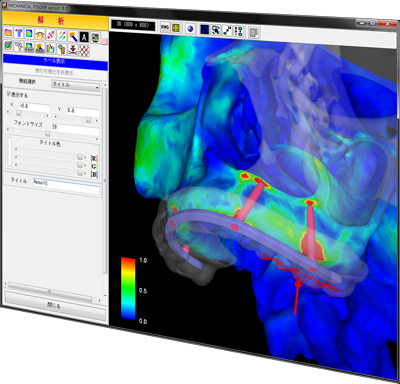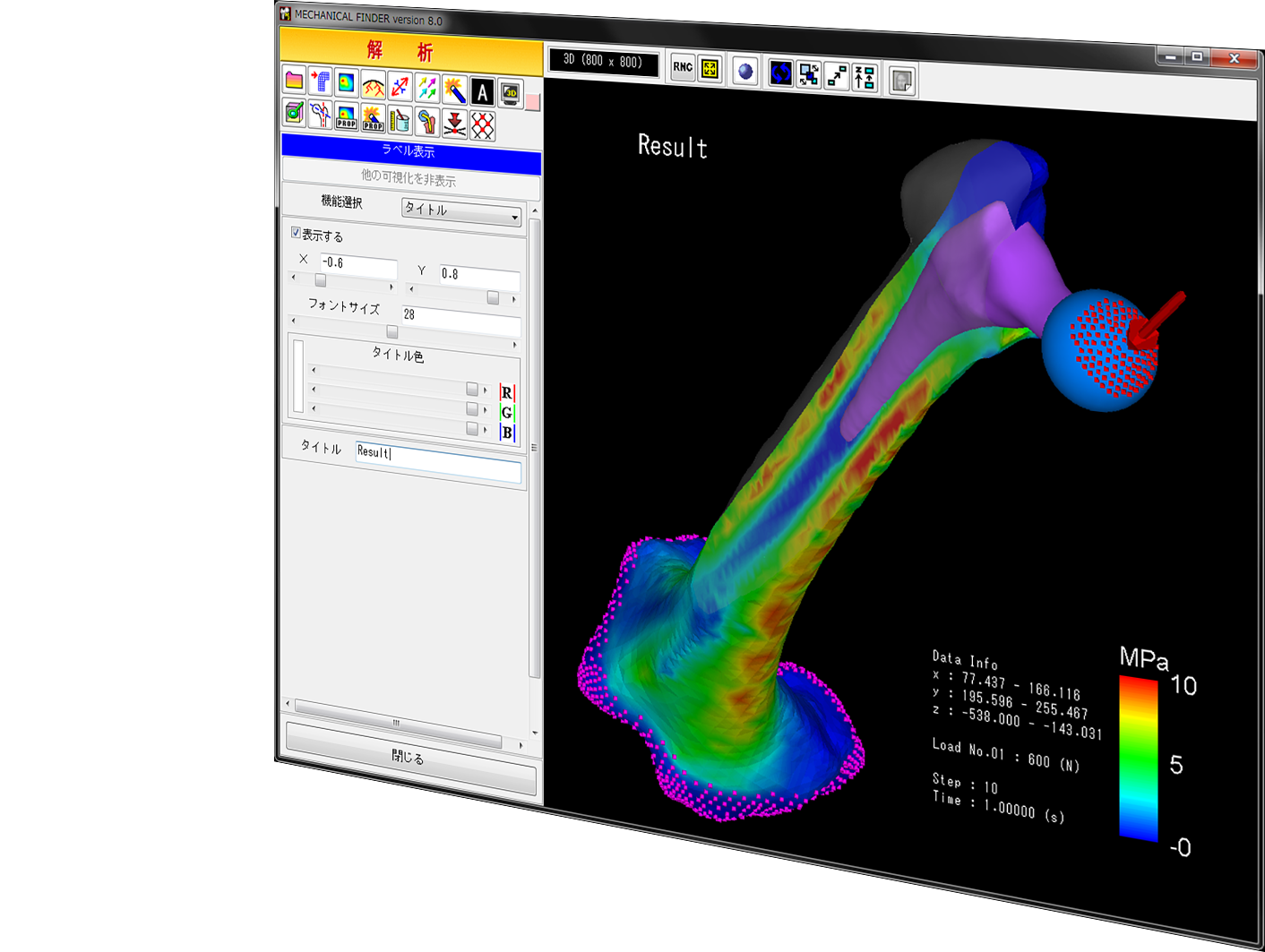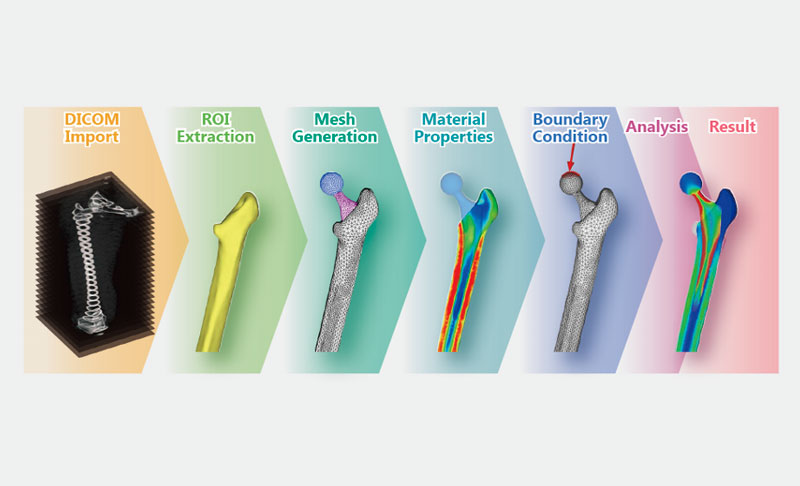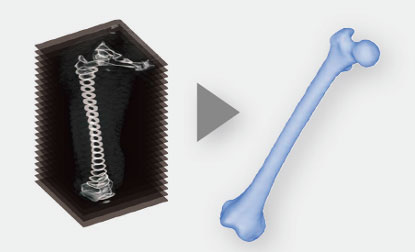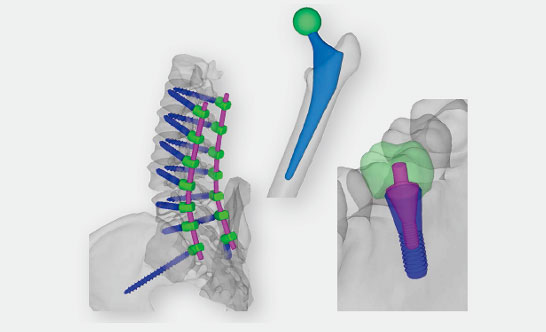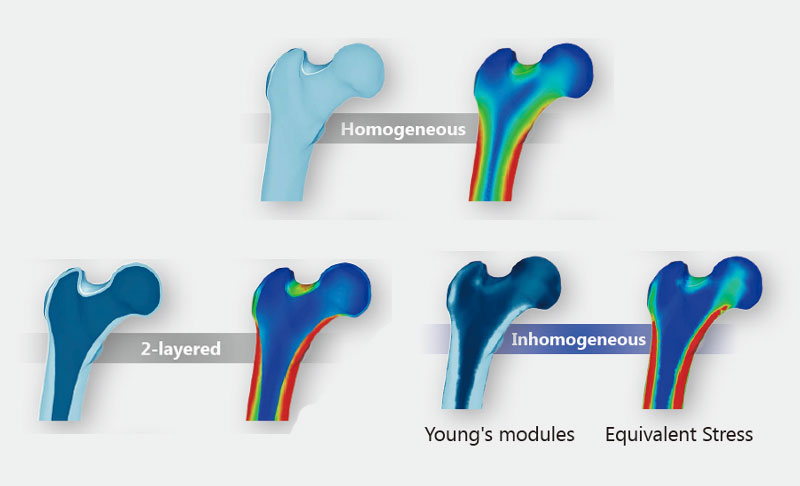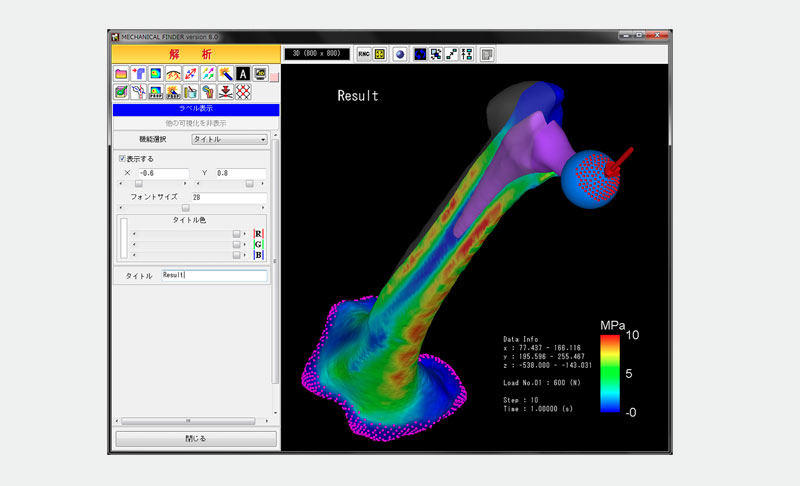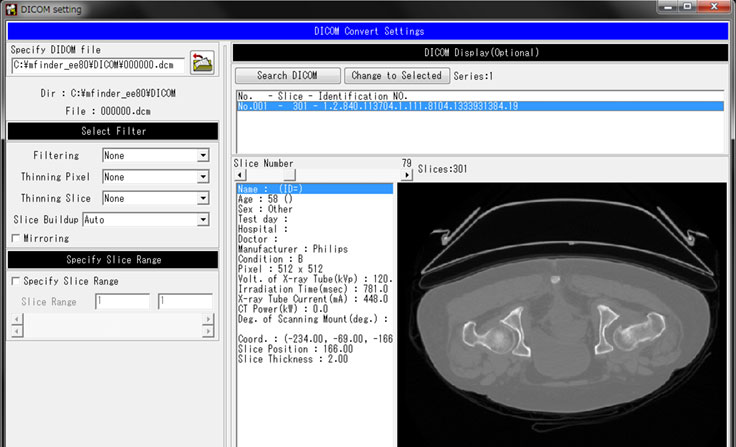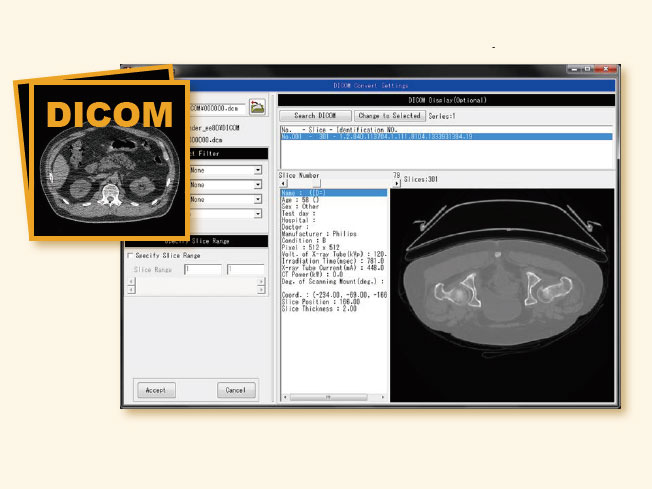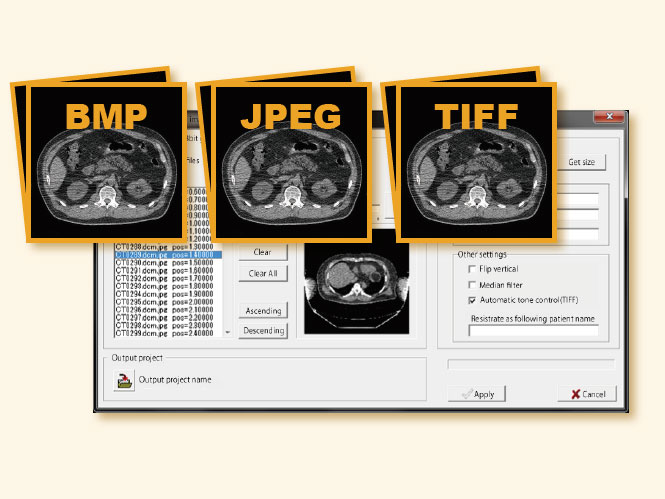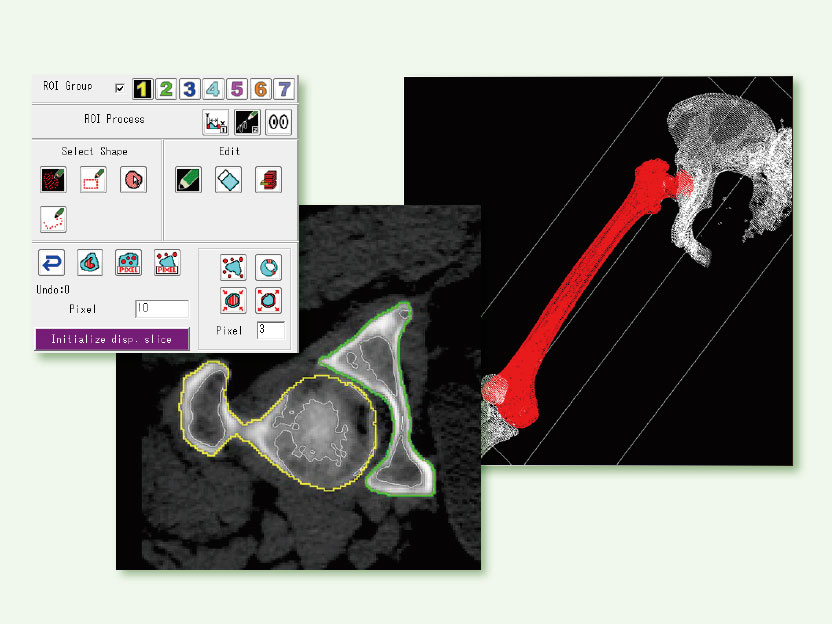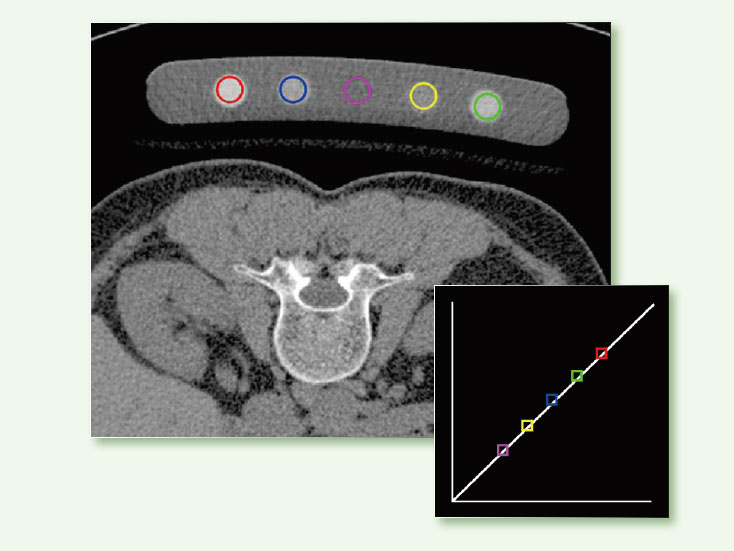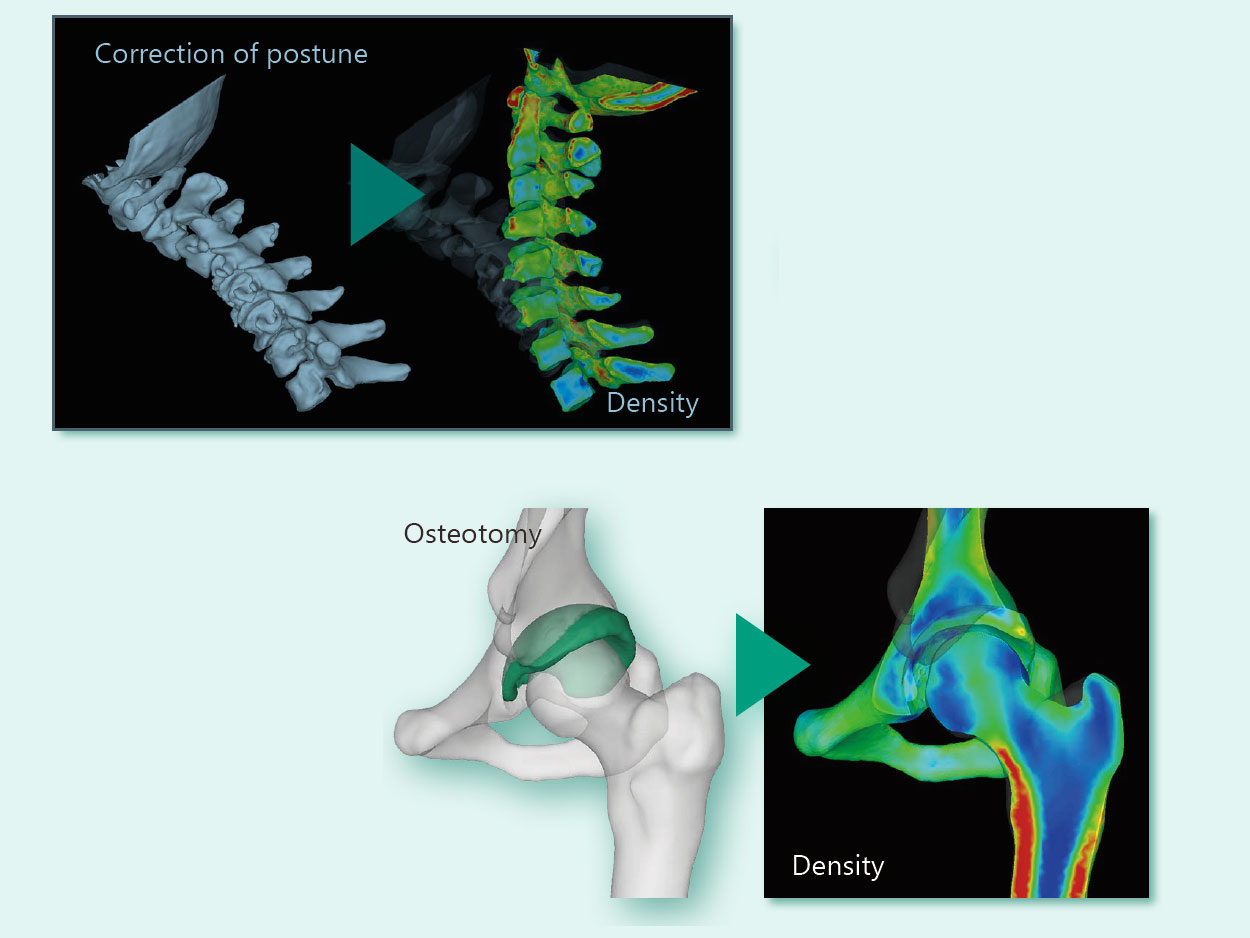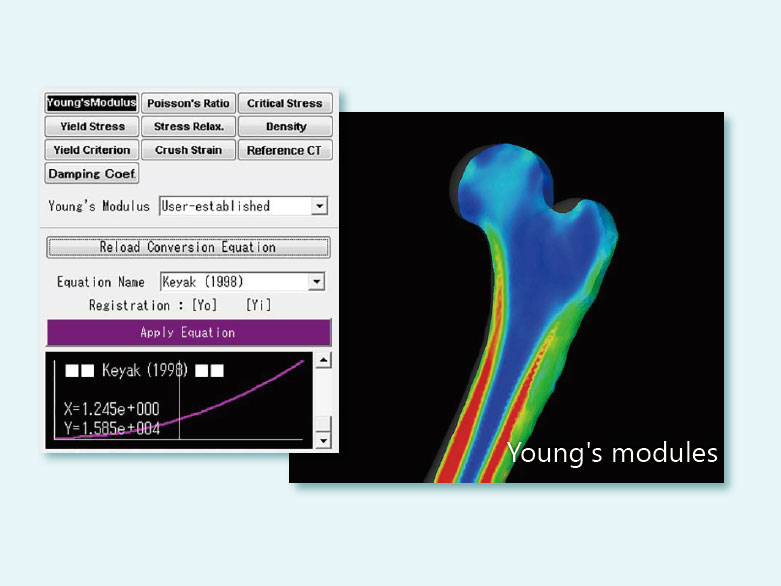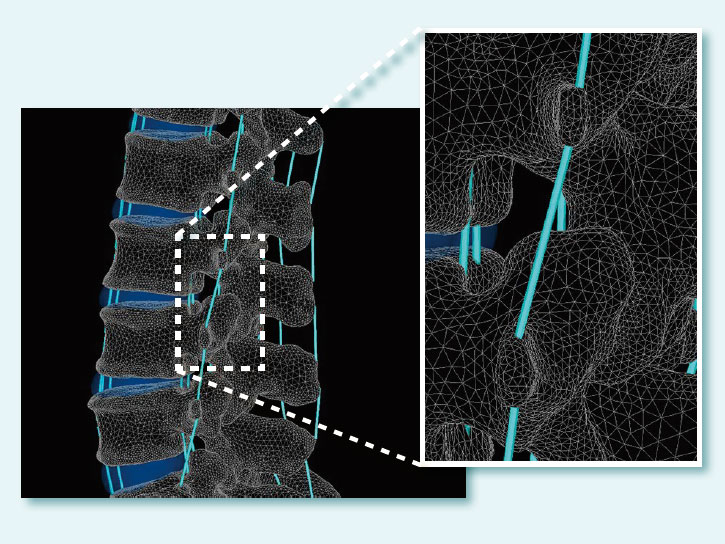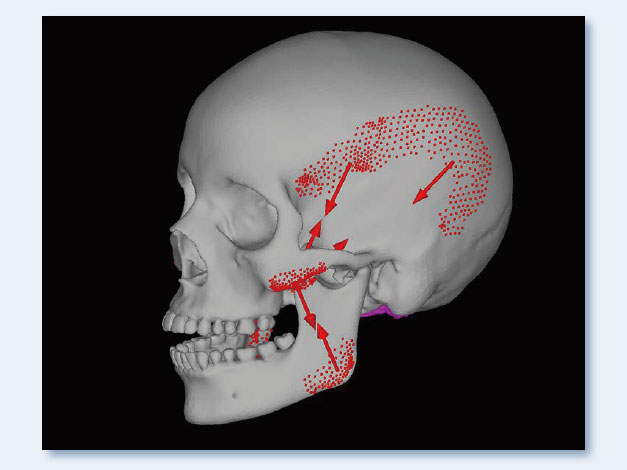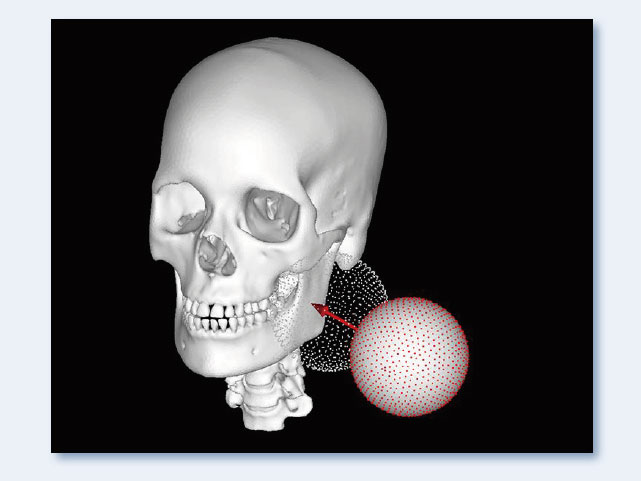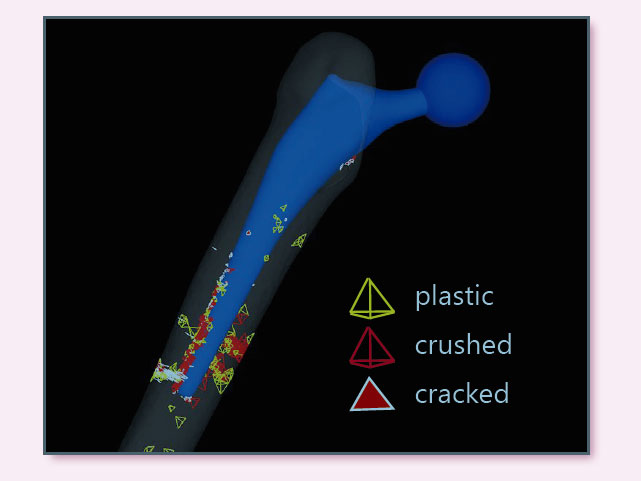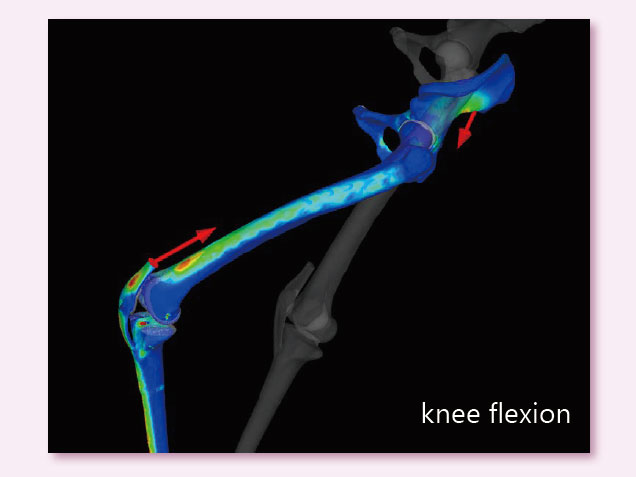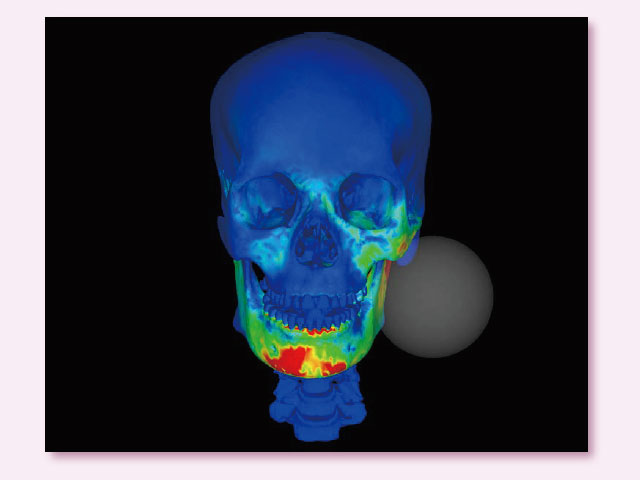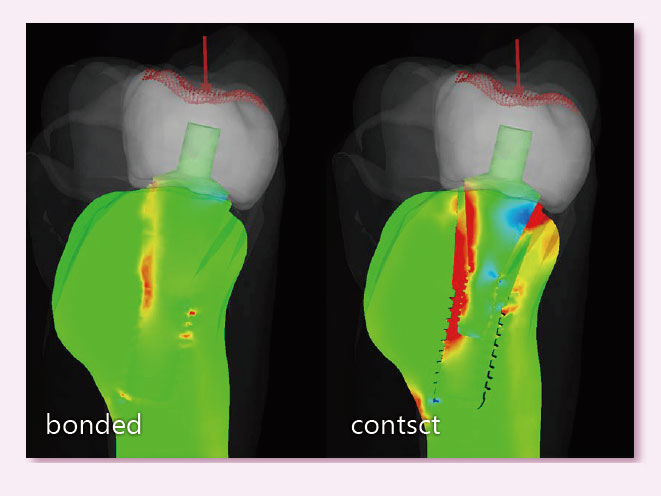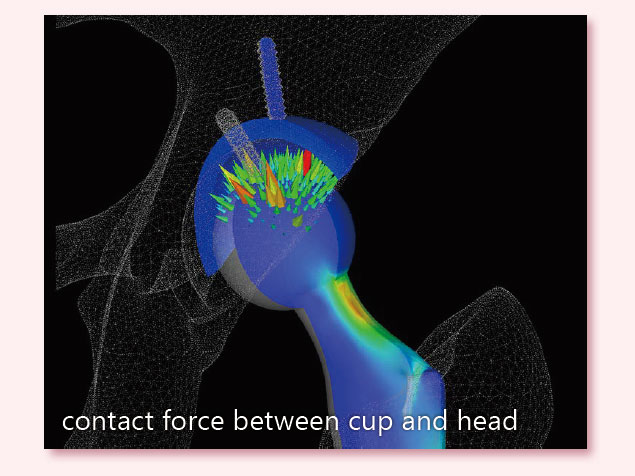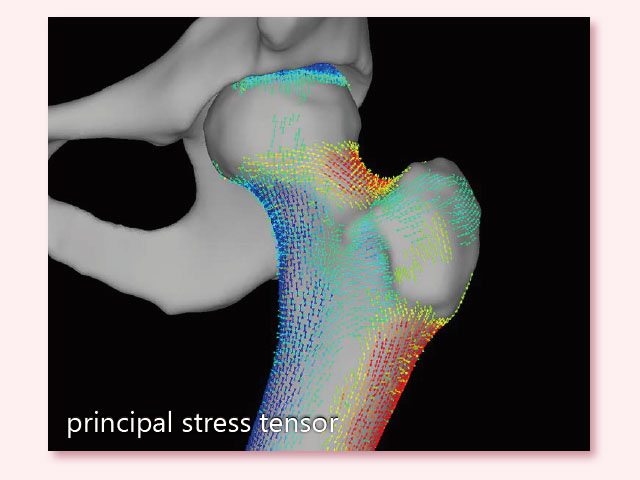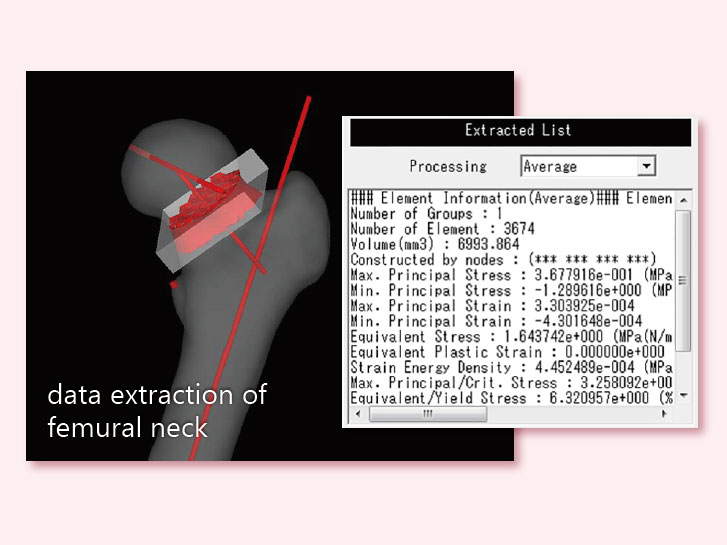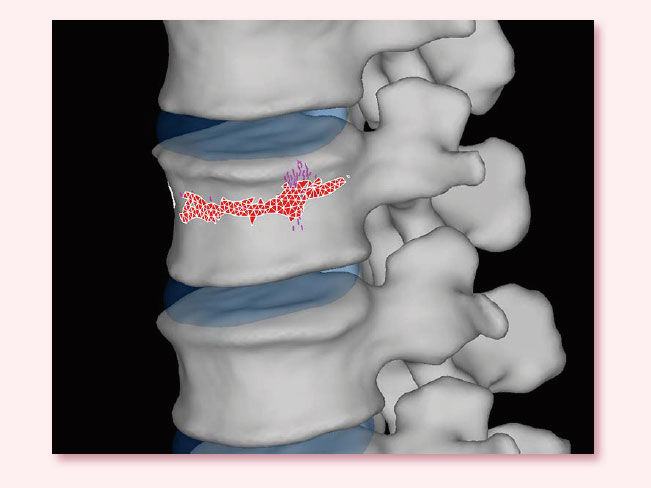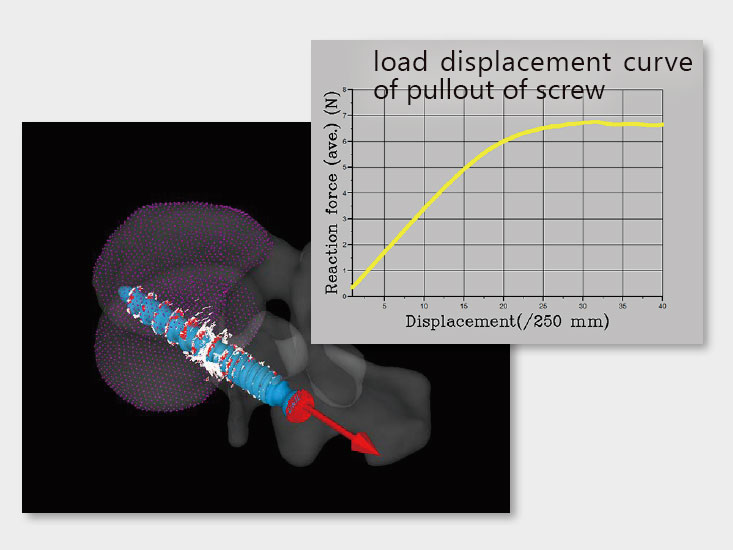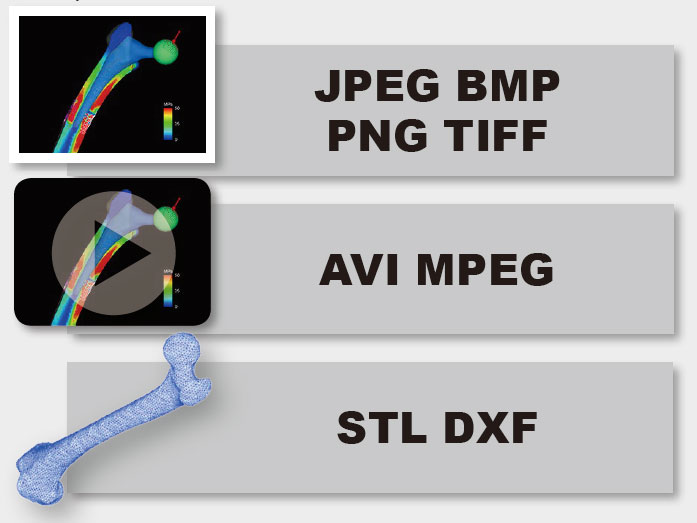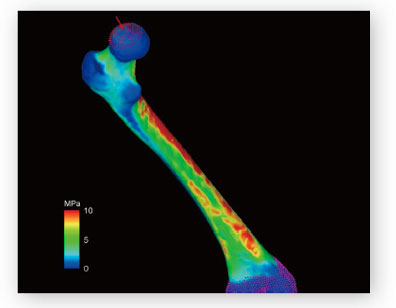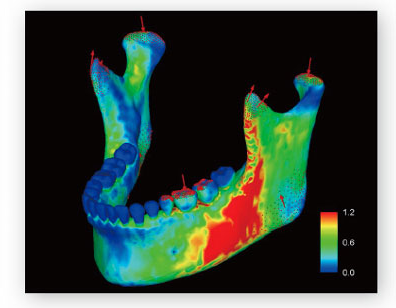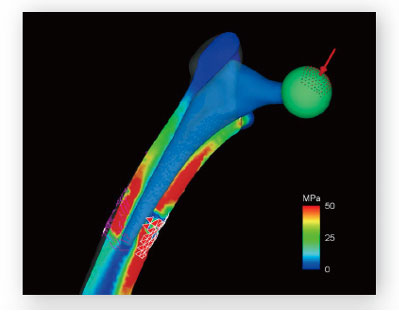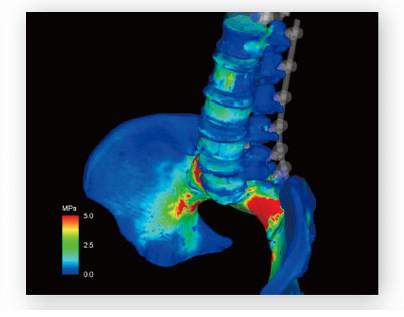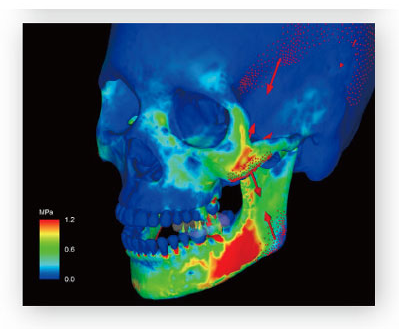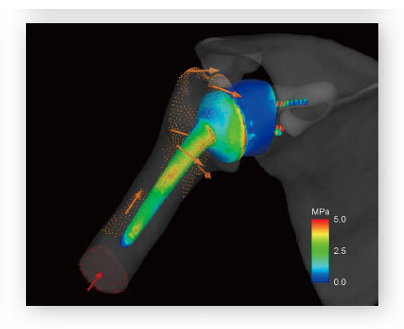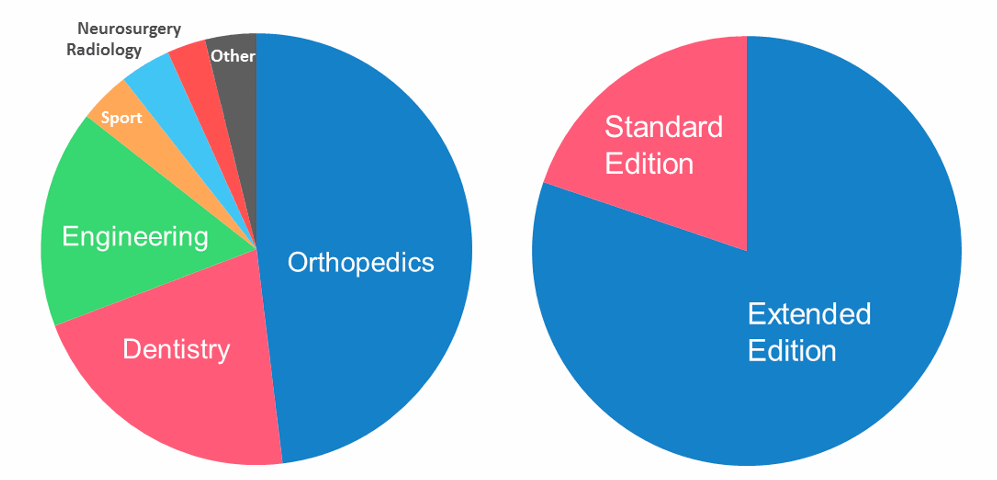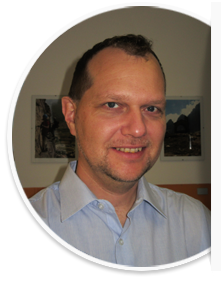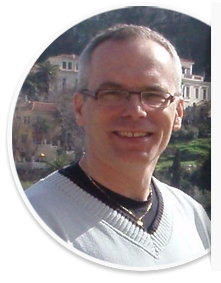As computer simulation has been widely used for analysis such as strength of structure or flow of fluid, it is indispensable in engineering. Simulation is also spreading in medical research, for example blood flow in the vessel or joint force during walking.
With regard to bone, bone density has been used for evaluation of bone strength, especially osteoporosis risk. However it has been pointed out the limitation that bone density can not remove the influence of bone spur or calcified vessel which don't contribute to strength and can not consider bone structure. Therefore evaluation of bone strength by finite element analysis have attracted attention over the years. This method evaluates the bone strength by constructing patient-specific bone model from CT data, assigning bone density and material properties from CT value, and performing finite element analysis. Today, it is used for various analyses such as implant installation or osteotomy in research field.
Computer simulation has benefit that analysis or measurement which can not be performed in vivo or experiment using cadaver is possible. However widely-used software has general versatility and high functionality, they make it difficult for non-engineer to learn the operation and the technique for an analysis. MECHANICAL FINDER is the finite element analysis software developed for medical doctors to analyze with no difficulty in clinical practice and a study.
MECHANICAL FINDER is the software to evaluate bone strength by considering the entire bone as a three-dimensional structure and applying finite element analysis.
